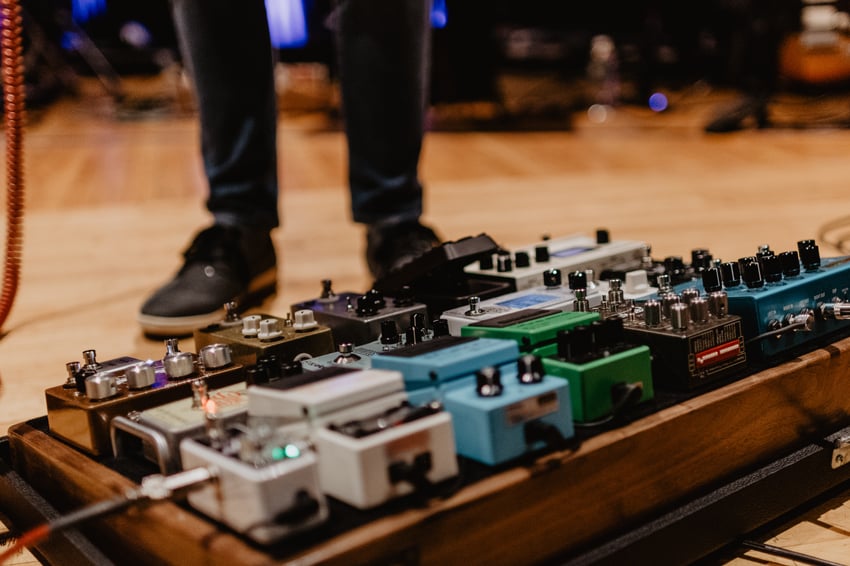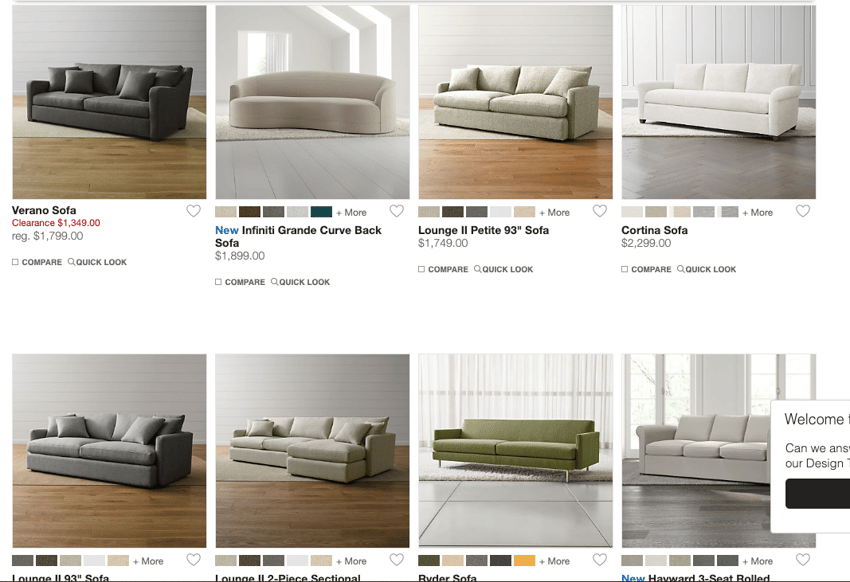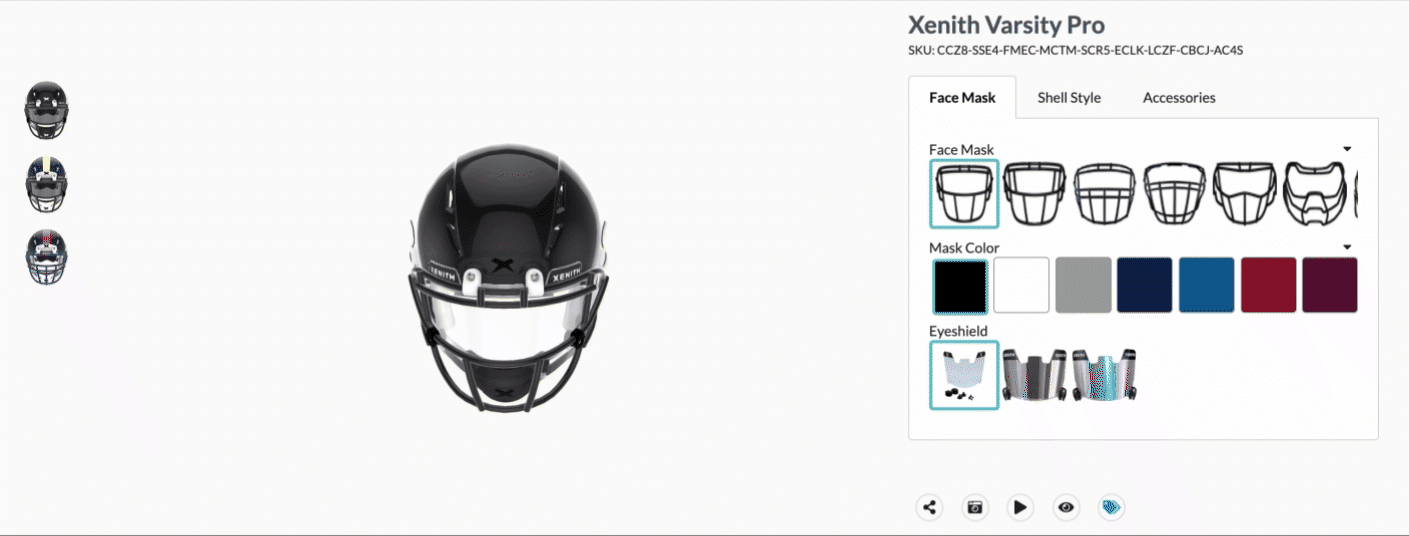Personalization, Customization, Configuration: An Intro for eCommerce Marketers

In 2015, Deloitte predicted the rise of made-to-order mass personalization. Its research showed that brands that offer personalization opportunities—and do it well—can expect an ROI on marketing spend of 500 to 800%.
In the four years since then, brands interested in enjoying such ROI have faced two major problems: first, one of definitions. While Deloitte writes about “personalization,” what the study describes is a blend of personalization, customization, and configuration. The difference between these is actually pretty significant, and it’s important for sellers to recognize what each is and how best to use it—because it impacts sales.
The second problem is (well, was) one of technology: until recently, few options existed for offering product customization (or configuration or personalization) at scale. Threekit’s entry onto the scene addresses that problem: today, brands can use our software to empower customers to personalize, customize, or configure products while online shopping—and see those creations in real time.

Here, we’ll tackle the definitions and then offer an overview of how our technology lets eCommerce brands employ each. We’ll also explain how eCommerce marketers can use product personalization, customization, and configuration to enhance their offerings, optimize the user experience of website visitors, and improve their bottom line. (If you're still figuring out how to scale your product visuals with your business, you may want to start here with our guide on the topic.)
Personalization: Enabling A Unique Outcome
In the context of eCommerce, “personalization” means making a completely unique and personal product—a one-off creation. Examples of personalization include custom engraving, photo uploads, and monograms.
Companies like L.L. Bean have long demonstrated the customer appetite for personalization: the clothing retailer is known for its monogrammed backpacks, tote bags, and beach towels. Just as Deloitte’s survey noted, customers are willing to pay extra for the personalization (about 27% extra, in the case of L.L.Bean’s towels).
So who can benefit from offering personalization? Anyone selling items that might be given as gifts, for one thing. About half of the respondents to Deloitte’s survey agreed that personalized items make great gifts. And offering personalization can turn something ordinary (like a guitar) into something special (like a guitar with the owner’s name etched into its body).
Other categories that are prime candidates for personalization: stationery, clothing, food and beverages, and accessories like watches.
"Personalization" can also refer to using customer data, past browsing behavior, and purchase history to show customers more relevant content and avoid one-size-fits-all marketing. Social media platforms and leading retail sites like Amazon use algorithms to inform their digital marketing and email marketing campaigns to be tailored to each individual customer's personal preferences.
Which is right for you?
|
Function |
Personalization |
Customization |
Configuration |
|
Definition |
Creating a unique, one-off version of a product |
Choosing from a fixed set of options to create a preferred combination |
Customizing with “off-menu” or custom options not available to the general public |
|
Tends to work for... |
Gifts Stationery Clothing Food and beverages Accessories |
Furniture Clothing Accessories |
B2B applications Experienced customers |
|
Examples |
Monogrammed backpack Engraved watch |
Sofa customized with fabric type and leg style Dress customized with sleeve length and neck cut |
Custom pump to meet flow needs or space requirements Guitar featuring hand-wound pickups rather than off-the-shelf pickups |
Customization: Offering Several Combinations
“Customization” means choosing from an existing fixed set of options to create a preferred combination. The difference between product customization vs. personalization is that customization doesn’t result in one-of-a-kind items; instead, it lets customers choose the version of a product they like best from a predetermined set of options, still providing a personalized experience within preset parameters.

Furniture retailers have been giving shoppers the option to customize merchandise for a while now: log onto the Crate and Barrel homepage, and you can customize a sofa with your choice of fabric from the options available.
To return to the guitar example, customization might look like choosing the color, body shape, and handedness from a set of options.
Offering product customization can benefit retailers in a variety of industries: furniture, clothing, accessories, and others.
Configuration: Enabling Extreme Customization
Think of “configuration,” in the eCommerce context, as an extreme form of customization. In B2C settings, configuration tends to work for experienced customers who are familiar enough with a product’s capabilities and their needs to order off-menu items, so to speak.

Product
configuration for a guitar might look like the guitarist requesting hand-wound pickups, a custom body shape, multiple necks, or additional strings.
In B2B, configuration happens when businesses need solutions that aren’t available off the shelf—a custom pump to meet flow needs and space requirements, for instance.
Realizing the ROI of Personalization, Customization, and Configuration
Four years after Deloitte predicted the rise of mass customization, we’re just now seeing signs that the prediction was correct. In Adobe’s 2019 Digital Trends report, 28% of companies cite “targeting and personalization” as a top trend, second only to “customer journey management.”
So how can brands add product customization, personalization, and configuration to their offerings in a way that drives engagement and improves conversion rates? These three steps are a starting point:
- Invest in the right software: Product customization software not only enables customization and personalization at scale, it also makes it possible for customers to see, in real time, what their customized and personalized products will look like. With computer-generated photorealistic 2D images and interactive 3D, customers can understand exactly what they’re creating and confidently order custom products. This can both increase sales and decrease returns, which are crucial steps for maintaining profitability in eCommerce.
Learn more about 3D configuration.
- Get marketing messaging just right: While product configuration is intuitive in some contexts (like furniture shopping), it may still feel unfamiliar in others. Guide shoppers through the shopping and ordering process by crafting website, email, and SEM messaging that communicates your unique benefits. This might include everything from offering explainers on your website to nurturing customers with images of custom products they configured while shopping. Make your customer experience both engaging and user-friendly.
- Partner with manufacturers who support custom orders: As mass customization gains steam, eCommerce brands will increasingly benefit from just-in-time manufacturing arrangements, where retailers minimize inventory and focus on ordering only what customers have committed to buying. That will mean partnering with supportive manufacturers.
Obviously, there’s a lot more to the story here. Stay tuned to this blog in the coming weeks for more detailed insight on how marketers and eCommerce leaders can improve customer satisfaction and the bottom line by investing in technology that enables personalization, customization, and configuration.
Or, if you’d like to get a sense of how product configuration software might work for your business, get in touch. We’ll send you everything you need to know.


